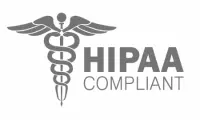Mental health professionals are trained to recognize burnout in their clients, but who is helping them recognize and address their own exhaustion? A recent CDC report found that health workers, including therapists, experienced significantly higher rates of poor mental health days and burnout in 2022 compared to 2018. Meanwhile, over 150 million Americans live in areas lacking sufficient mental health providers, increasing the pressure on those who remain in the field. As the demand for mental health services rises—already impacting more than one in five U.S. adults—the burden on caregivers grows heavier. It’s time to shift the conversation to those who carry the emotional weight of others every day. Burnout among therapists isn’t just common—it’s an escalating crisis that must be addressed.
Yet, the solution isn’t simply self-care in the form of bubble baths or meditation apps. True resilience is built through connection—with oneself, with peers, and with a community that understands the emotional toll of this work. Inner Immersion provides a model that not only acknowledges these struggles but actively works to prevent them by fostering authentic, restorative relationships among mental health professionals.
The Hidden Causes of Burnout in Mental Health Professionals
Burnout among mental health professionals isn’t just the result of long hours—it’s driven by systemic challenges within the industry itself. Many LMHPs enter the field out of a deep desire to help others, only to find themselves overwhelmed by administrative burdens, financial pressures, and an ineffective system that often prioritizes documentation over true healing.
- Administrative Overload: Excessive note-taking and documentation requirements take time away from meaningful client interactions, increasing frustration and exhaustion.
- Diagnostic Pressures: Many therapists are required to assign diagnoses for insurance purposes, even when a client might not fit neatly into a diagnostic category, shifting the focus away from true healing.
- Emotional Toll: The constant exposure to trauma and the expectation to remain emotionally available without reciprocal support can lead to compassion fatigue.
- Lower Compensation: Despite their essential role, many LMHPs earn less than other healthcare providers, adding financial stress to an already demanding profession.
Acknowledging these systemic factors is key to understanding why burnout is so prevalent—and why the traditional self-care model is not enough.
Recognizing the Signs of Burnout
Burnout isn’t just about exhaustion; it’s about disconnection. Many LMHPs don’t recognize they’re burning out until they feel numb, detached, or even resentful toward the work they once loved. Common warning signs include:
- Compassion Fatigue: Feeling emotionally drained, detached, or even cynical about clients’ struggles.
- Emotional Exhaustion: A deep sense of depletion that isn’t relieved by rest.
- Loss of Meaning: The feeling that the work, once fulfilling, now feels empty or mechanical.
- Irritability & Avoidance: Increased frustration with clients, or a desire to withdraw from professional and personal relationships.
If any of these resonate, you are not alone—and more importantly, there is a way back to passion, purpose, and connection.
Connection as a Path to Resilience
While traditional self-care advice encourages individual coping strategies, research shows that connection is one of the most effective ways to prevent and heal burnout. A recent study in the Journal of Clinical Psychology found that therapists who actively engage in peer support and collaborative spaces report lower levels of burnout and higher job satisfaction.
Inner Immersion integrates this understanding into its core methodology. Rather than working in isolation, facilitators become part of a community of support, fostering resilience through:
- Peer Collaboration: Regular opportunities to connect with like-minded professionals in an open, restorative space.
- Guided Inner Practices: Techniques that allow facilitators to reconnect with themselves while holding space for others.
- Work-Life Balance Integration: A revolutionary business model that ensures all facilitators receive two weeks off per quarter, ensuring time for restoration and personal growth.
The Inner Immersion Approach: Healing the Healer
Inner Immersion doesn’t just equip mental health professionals with tools for their clients—it provides an immersive, healing experience for the practitioners themselves. Through a blend of experiential techniques, guided storytelling, and community collaboration, therapists are given space to process their own emotions, replenish their energy, and find renewed meaning in their work.
As one facilitator shared: “Before Inner Immersion, I didn’t realize how much I was holding onto. For the first time, I felt truly supported—not just as a professional, but as a person.”
An Invitation to Prioritize Yourself
As Mental Health Awareness Month approaches, let this be a reminder that your well-being matters, too. Inner Immersion is creating a movement where mental health professionals don’t just survive the demands of their work—they thrive in it.
Download our free guide on practical connection-based burnout prevention strategies, and explore how the Inner Immersion Certification Program can help you create a practice rooted in sustainability, support, and genuine healing.
Join us on June 5th at 4PM PST for a special FREE event where we’ll dive deeper into these strategies, sharing tangible ways to protect your energy, reconnect with your passion, and transform your practice.
Because before you can hold space for others, you deserve to have space held for you.



